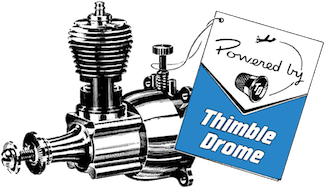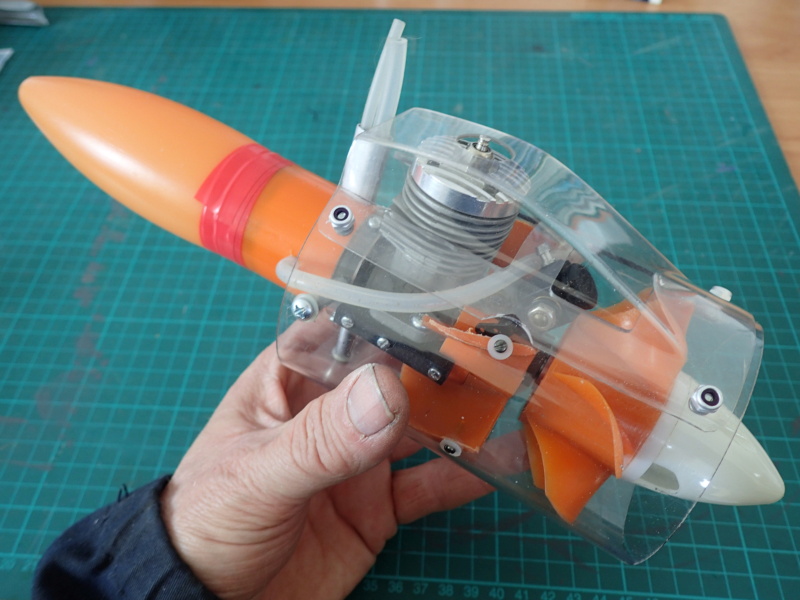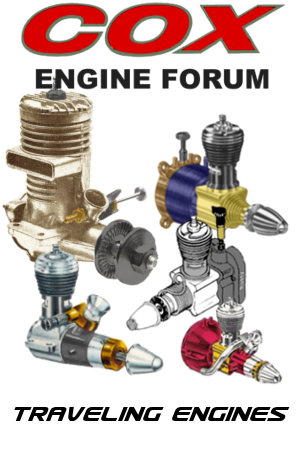Log in
Search
Latest topics
» Fox .35 Modifications by Onelife Today at 4:34 pm
» Project Cox .049 r/c & Citabrian Champion
by MauricioB Today at 4:08 pm
» Jim Walkers FireBee - This is going to be fun
by rsv1cox Today at 3:56 pm
» Happy Anzac Day!
by GallopingGhostler Today at 12:44 pm
» Revivng Some Childhood Classics
by rsv1cox Today at 7:17 am
» Introducing our Cox .049 TD Engines
by getback Today at 6:20 am
» Roddie's flat-bottomed boat..
by Levent Suberk Today at 12:23 am
» Cox powered jet-pump for model Sprint Boat
by roddie Yesterday at 10:25 pm
» Micro Draco Gets to Fly on a Beautiful Morning.
by rdw777 Yesterday at 8:15 pm
» Jim Walker Firebaby
by rdw777 Yesterday at 8:06 pm
» Hydro-bat by Vic Smeed: engine probs
by GallopingGhostler Yesterday at 5:12 pm
» Roddie-Rigger.. a 2005 original design
by roddie Yesterday at 3:39 pm
Cox Engine of The Month
Young Engineers Space Program story
Page 1 of 1
 Young Engineers Space Program story
Young Engineers Space Program story
Well my friends I'm running a little late today but i promised you a continuation. I last left you when I met my boss at our standby offices. John had just informed me that I would be working on the Stage pressuriztion and ground pneumatics when our Battleship test stand was completed at COCA test facility. He said I would be working with George Knudsen who would be my lead engineer. I ask specifically what I would be doing and he said that George would fill me in when arrived lster in the morning. In the mean time he suggested I go over to the Rocketdyne supply and pick up what ever I need in the way of writing pad, pencils, a desk pad and a three hole punch and a few loose leaf binders and wait for George.
Shortly before lunch George arrived and introduced himself and ask about my experience and education. I told him about being the Stand engineer at Delta for test firings but that didn't seem to impress him since what I did there would have no bearing on what we would be doing at COCA. Now a little about COCA and the Battleshio test stand. The Battleship SII test stand was built by subcontractors for S&ID. This test stand was given the Name Battleship because it was to be used to test all the Second stage launch systems as well as fire the single and five cluster J2 rocket engines in preparation for launching the Saturn V at Cape Kennedy (formerly Cape Canaveral), Now let me tell a little bit about the battleship as why it was called the battleship. I have attached some pictures to help you visualize what I talking about. It was 33 feet in diameter and 24.9 feet high. It was build of stainless steel and the walls were 4 inches thick. It also had a liner that formed the inner fuel and oxygen tanks which was basically a monsterous thermos bottle which we had to maintain a constant vacuum to prevent the liquid Hydrogen and oxygen from boiling off since to keep the Hydrogen in a liquid state it had to be kept at around minus 435 degrees + or - ( don't remember the exact temperature but that was pretty close). The main thing is it held 260,000 gallons of liquid Hydrogen and 83,000 gallons of liquid Oxygen which we would use for the 360 second burn to second stage cutoff and reach a speed of around 27,000 mph (if my memory
serves me). The five engines used to power the second stage developed one million one hundred sixty thousnd pounds of thrust thats 1,160,000 pounds. Some one once said that is the same power as a single line of cars from New York to Los angeles. I don't know who said that but he must have run out of something to do. And that my friend is the Battleship test stand. Oh, by the way the Battleship had a monsterous flame bucket that deflected the rocket engine flame during firing. You might like to know that the bucket was two layer steel with a hundred thousand small holes that ejected water to prevent the flame bucket from melting when we fired all 5 engines. During our 360 second cluster firing the flame bucket used 500,000 gallons of water to keep it from melting. Hope you enjoy the pictures. See you in a couple of weeks.
In a couple of weeks I will fill you in on what happend next
Shortly before lunch George arrived and introduced himself and ask about my experience and education. I told him about being the Stand engineer at Delta for test firings but that didn't seem to impress him since what I did there would have no bearing on what we would be doing at COCA. Now a little about COCA and the Battleshio test stand. The Battleship SII test stand was built by subcontractors for S&ID. This test stand was given the Name Battleship because it was to be used to test all the Second stage launch systems as well as fire the single and five cluster J2 rocket engines in preparation for launching the Saturn V at Cape Kennedy (formerly Cape Canaveral), Now let me tell a little bit about the battleship as why it was called the battleship. I have attached some pictures to help you visualize what I talking about. It was 33 feet in diameter and 24.9 feet high. It was build of stainless steel and the walls were 4 inches thick. It also had a liner that formed the inner fuel and oxygen tanks which was basically a monsterous thermos bottle which we had to maintain a constant vacuum to prevent the liquid Hydrogen and oxygen from boiling off since to keep the Hydrogen in a liquid state it had to be kept at around minus 435 degrees + or - ( don't remember the exact temperature but that was pretty close). The main thing is it held 260,000 gallons of liquid Hydrogen and 83,000 gallons of liquid Oxygen which we would use for the 360 second burn to second stage cutoff and reach a speed of around 27,000 mph (if my memory
serves me). The five engines used to power the second stage developed one million one hundred sixty thousnd pounds of thrust thats 1,160,000 pounds. Some one once said that is the same power as a single line of cars from New York to Los angeles. I don't know who said that but he must have run out of something to do. And that my friend is the Battleship test stand. Oh, by the way the Battleship had a monsterous flame bucket that deflected the rocket engine flame during firing. You might like to know that the bucket was two layer steel with a hundred thousand small holes that ejected water to prevent the flame bucket from melting when we fired all 5 engines. During our 360 second cluster firing the flame bucket used 500,000 gallons of water to keep it from melting. Hope you enjoy the pictures. See you in a couple of weeks.
In a couple of weeks I will fill you in on what happend next

Dick Russ- Silver Member


Posts : 78
Join date : 2021-11-23
Age : 85
Location : Oklahoma City, OK
 Similar topics
Similar topics» Young Engineers Space Program story
» Young Engineers Space Program story
» Young engineers Space program Story
» Young engineers Space program Story
» Young engineers Space program Story
» Young Engineers Space Program story
» Young engineers Space program Story
» Young engineers Space program Story
» Young engineers Space program Story
Page 1 of 1
Permissions in this forum:
You cannot reply to topics in this forum

 Rules
Rules







